Happy reads for COVID-19 times: Books to get you through this summer
Recommendations that are—sometimes unexpectedly—hopeful, to add to your reading list during what will surely be another strange few months

(Taylor Roades/Stocksy)
Share
A reader could be forgiven for thinking a pandemic, a slough of human tragedy and economic disaster, would instinctively stock their bookshelves with a deluge of doom and gloom. But humans are a perverse lot, in ways both good and bad, and book trade insiders are taking note of a failing interest in dystopias of any kind among publishers, if only because their acquisition editors can’t stand to read them any more. (Apparently, it takes a certain amount of real-world comfort to enjoy disaster lit.) The hunger for a better world or, more acutely, a hopeful take on the one we have, is stronger than ever. And in actual fact, there are numerous uplifting new releases to embrace this summer.
Fiction
Hope can be found in some odd corners indeed. Two of the season’s more uplifting novels are, well, plague books by Canadian authors. Saleema Nawaz’s Songs for the End of the World is prescient in the details of its fictional coronavirus pandemic and moving in its portrayal of characters who refuse to give up on humanity. The Pull of the Stars by Emma Donoghue, set in a Dublin maternity ward during the great influenza pandemic a century ago, tells a story whose larger contours, including the staggering death toll, is already well known. Yet nothing symbolizes hope like a newborn babe, and Donoghue’s novel of three caregivers with little but loving care to give ends on a high note. At first glance, Australian Charlotte McCongahy’s Migrations, is another grim volume. There is a harshness to it—this time the backdrop disaster, extinction, is afflicting the natural and not human world—but the novel, half elegy and half thriller, ends in natural beauty and human hope. Then there are the short stories of How to Pronounce Knife in which Souvankham Thammavongsa crafts captivating tales out of the often hardscrabble lives of Lao refugees in Canada, filled with characters who manage to find ways to control their world.
 Songs for the End of the World
Songs for the End of the World
Saleema Nawaz, Ebook available now
Rushed out as an ebook months before its August print release, Songs is already famous for how prescient a pandemic novel it is, the way its epidemiological issues, from the rush to put unproven treatments into use to the pressure to reopen economically too soon, mirror our own. But it’s also a haunting and ultimately hopeful story, told by a half-dozen intricately linked characters who struggle to face down panic and despair, about the fragility of human connection and the lengths to which even ordinary people will go to keep it alive.
—Brian Bethune
 The Pull of the Stars
The Pull of the Stars
Emma Donoghue, Available July 21
Another pandemic book finished months before our current situation, Emma Donoghue’s 11th novel takes place in a Dublin hospital during the deadly second wave of the Spanish flu. Over three endless days as the Great War grinds to its end, nurse (and narrator) Julia Power, volunteer Bridie Sweeney and physician Kathleen Lynn (a real-life figure) profoundly affect one another’s lives as they struggle in a makeshift and flu-ravaged maternity ward. Donoghue, a first-rate historical novelist, skillfully weaves the era’s primitive medical understanding and social prejudices into her moving story of three caregivers with little but loving care to give.
—Brian Bethune
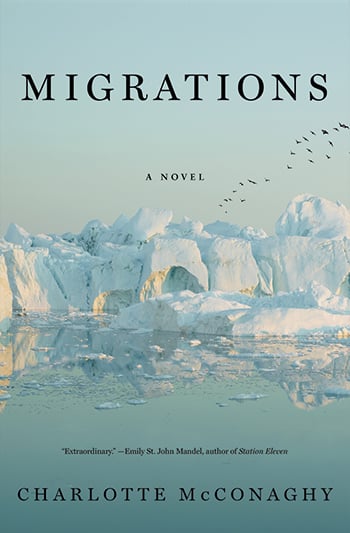 Migrations
Migrations
Charlotte McConaghy, Available Aug. 4
It’s the near future, and the Sixth Great Extinction is roaring to its end, decimating the planet’s wildlife. Franny Stone, who has always found balm for her losses in her love of birds, is obsessed by the thought of their extinction. She heads to Greenland to track the last flock of Arctic terns on what she believes will be their final migration to Antarctica. After she affixes tracking devices to three of the flock, Franny talks her way onto a desperate fishing boat, convincing the captain and crew of the Pequod-like Saghani that the terns will lead them to their own white whale, one last haul of disappearing fish. On the journey south, one shard at a time, the secrets of Franny’s violence-shattered life—and the danger her past poses to everyone on board—start to emerge, in an exceptional novel that is both an elegy to a vanishing world and
a page-turning thriller.
—Brian Bethune
 How to Pronounce Knife
How to Pronounce Knife
Souvankham Thammavongsa, Available now
The characters in Souvankham Thammavongsa’s debut short-fiction collection—many of whom are, like her, Lao refugees living in Canada—hold typical newcomer jobs: they work in nail salons and factories, or as cleaners and labourers. But Thammavongsa, who’s also a poet, isn’t interested in a documentary-style literature of hardship. Instead, she elevates each of these spare, unflashy tales into something captivating and unpredictable. Often, generational roles are reversed, with children becoming their parents’ protectors. In the title story, a young girl decides not to correct her father’s hard-K pronunciation of “knife,” even after she’s teased about it at school. In another, the narrator confesses: “I didn’t tell my mother they don’t wear uniforms in college here. I wanted her to have her dreams.”
In “Randy Travis,” a man scrimps and saves so his wife can see her idol in concert. When they get there, however, they’re so far away that the singer’s face is “the size of a pin.” You can take that as a metaphor for minorities being relegated to the back seat of their adopted culture; and yet, it’s also a rite of passage in that very culture: who hasn’t suffered the nosebleeds just to be in the presence of their hero? Over-interpret Thammavongsa at your own peril. She never panders or resorts to outsider clichés. At a factory Christmas party, the owner’s wife wears clothes “in fabric no one else’s clothes were made out of.” If that’s envy, the narrator’s not copping to it.
These characters might be at the bottom of the socio-economic ladder but they find, and wield, power where they see it. In the final story—a miniature tour de force—a teen Lao girl, hoping to shake off a well-intentioned guy in her class who clearly likes her, gets him a job worm-picking with her and her mother, only to see him promoted to manager, a position he performs effortlessly and with cold detachment. Her revenge comes when she refuses to answer her door the night of the school dance, reducing him to a pathetic, sobbing mess.
That spirit—doughty yet mischievous—runs through Knife, though it’s perhaps best captured by the two girls in “A Far Distant Thing,” who like to take turns pushing each other into an apartment garbage chute: “not too hard. Just enough for us to feel the fear and then let it go.”
—Emily Donaldson
Nonfiction
Nonfiction doesn’t (necessarily) think we are halfway down the slippery slope to perdition either. Take Humankind—that’s kind as in loving, not type—by Dutch polymath Rutger Bregman. Forget the selfish gene, people are “deeply inclined to be good to each other,” a bold declaration backed up by reams of psychological studies, historical explorations and fine storytelling. Whitehorse-based Eva Holland’s compelling Nerve, her examination of fear—her own as well as humankind’s—shows how we can reach détente with a crippling roadblock. The good-humoured and funny pages of Moments of Glad Grace, Alison Wearing’s account of her trip to Ireland with her 80-year-old father, is propelled by a sweetly expressed awareness of how brief a life we share with our loved ones. From Here to There, British science writer Michael Bond’s exploration of the intersection of neuroscience and geography, is an often joyful take on how much we love to ramble, and how happy and confident of our place in the world (literal and metaphysical) it makes us. Even so, it may not ultimately be as joyful as a potentially much darker book, Billy-Ray Belcourt’s A History of My Brief Body. Belcourt’s memoir, beginning but not ending in personal memory, is a virtuoso demonstration that “joy is art is an ethics of resistance.” Yes, happy reads are here again.
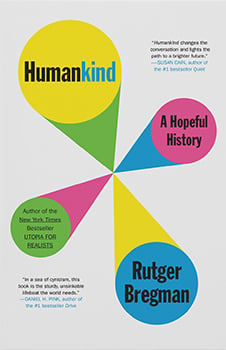 Humankind: A Hopeful History
Humankind: A Hopeful History
Rutger Bregman, Available June 2
If there’s such a thing as a beach read for brainiacs, this might be the one for socially distanced 2020. Its hopeful message could not be better timed. On an epic quest for a solid answer to an eternal question, whether human nature “is essentially good—or bad,” Dutch polymath, TED Talks wunderkind and self-described “preacher’s kid” Rutger Bregman doesn’t struggle long before arriving at a decision. He concludes that humans are “deeply inclined to be good to each other.” It’s how we’ve evolved.
Sensing that for a cynical, suspicious and fearful era, such a stance might seem counterintuitive (or sadly naive), he marshals an army of research findings as support. In essence, Bregman aligns himself with primatologist Frans de Waal, who coined the term “veneer theory” to describe an enduring but deeply flawed view of human nature associated with the 17th-century philosopher Thomas Hobbes—that our civilized behaviour amounts to “a cultural overlay, a thin veneer hiding an otherwise selfish and brutish nature.”
As Bregman turns adroitly from Neanderthal brains and Russian silver foxes to communal reactions to the Blitz of 1941, he returns to Hobbes/veneer theory on a regular basis. And as the pages of Humankind progress, Hobbes’ leviathan of a viewpoint takes on the appearance of cantankerous opinion rather than verifiable fact. Bregman never denies human darkness, only that it’s essential to our very nature. Cannily, he understands that any reader will immediately hold up any number of historical events that appear to prove we’re not inclined to be good to each other. He revisits several, offering fresh ways to interpret them.
Evidently an avid reader and researcher, Bregman skips from idea to idea—Machiavellianism, the Golem effect, “pluralistic ignorance,” “ ‘broken windows’ theory”—while also touching on Dawkins’s selfish gene, Arendt’s “banality of evil,” Golding’s Lord of the Flies (not to mention jihadists, bullying, Donald Trump, Easter Island, oxytocin, Jane Goodall, Norwegian prisons, and many, many experiments using student volunteers or lab rats). It’s a dazzling performance.
As impressive as Bregman’s arguments are, he’s a gifted storyteller, transforming discussions of “contact hypothesis” and “extrinsic incentives bias” into riveting food for thought. Picture an animated, multi-directional lecture by a charismatic professor, and you’re at Humankind.
The argument now supported to his satisfaction, Bregman subsequently outlines a “new realism,” an approach for seeing ourselves as we truly are. And a final chapter, “Ten Rules to Live By,” gives readers some species-wide self-help. Though the seventh rule (“Avoid the news”: it “only skews your view of the world”) may rub many people the wrong way, others (including “Don’t punch Nazis” and “Come out of the closet: Don’t be ashamed to do good”) have the merit of being buoyant and doable. “Cut yourself some slack,” Bregman seems to tell humanity. That’s welcome advice.
—Brett Josef Grubisic
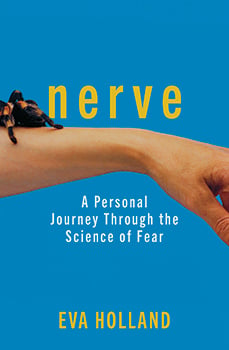 Nerve
Nerve
Eva Holland, Available now
Despite a lifetime of being afraid, Eva Holland never considered fear as a human phenomenon or confronted her own, until her worst fear—the sudden death of her mother—was realized in 2015. After her grief and panic faded, the Whitehorse-based writer decided to face her fears and learn about everyone else’s. Nerve’s smooth interweaving of memoir and science—the human ability to smell fear is explored during Holland’s account of her skydiving experience—is what makes it so compelling.
—Brian Bethune
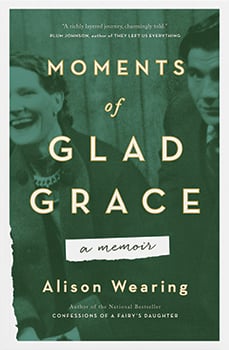 Moments of Glad Grace
Moments of Glad Grace
Alison Wearing, Available now
The author has written about her father before, in the bestselling—and equally witty—2013 memoir Confessions of a Fairy’s Daughter. Now, Joseph Wearing, on the cusp of his 80th birthday, is heading to Ireland for genealogical research, with his daughter as assistant, despite zero interest in the subject. There are raw moments of memory and clashing meaning, as in all family memoirs, but the prevailing tone is good-humoured, propelled by a sweetly expressed awareness of how brief a life we share with our loved ones.
—Brian Bethune
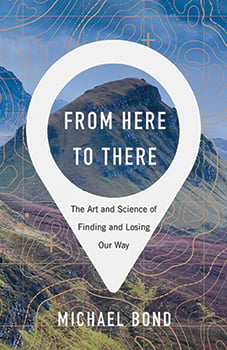 From Here to There
From Here to There
Michael Bond, Available now
Humans are born to wander, or so argues this absorbing exploration of the intersection of neuroscience and geography. British science writer Michael Bond delves into all the quirks of our wanderlust, including statistically significant gender differences in giving directions, a descriptive “go past the church, turn left at the florist . . . ” from women vs. the male “go two kilometres south then west for 500 m.” The gender split explains why men do better on navigational tests than women do—such tests favour those who use math to orientate themselves—while women do better than men in remembering where objects are located.
The long-standing evolutionary explanation for this difference in finding our way—early Homo sapiens males ranging far to hunt, females sticking close to home for foraging—no longer holds up, and researchers are increasingly inclined to a cultural explanation. Girls have never been allowed to roam as far or as freely as boys, limiting their chances to build the step-by-step mental maps that give children confidence in their directional sense. Studies show that eight-year-olds bussed to school are more inclined to display anxiety when away from home than those who walk to class. For that reason, experts Bond spoke with are alarmed by the way parental fear—of traffic and strangers—has shrunk modern childhood’s range. (The author saves his most provocative issue for the epilogue, however: if the heavy lifting of cognitive mapping has been crucial to human life as we know it, just what is GPS technology, that ultimate shortcut, doing to us?)
Our mental maps are the primary reason humans manage to get anywhere, given how hopeless we are at dead reckoning. Lost without landmarks—in forest, fog or desert—it is impossible to avoid travelling in circles. Yet setting out blindly is what panic induces: a study of 800 search operations in Nova Scotia found only two lost people who had stayed put, one of them an 11-year-old boy who had taken a “Hug a Tree and Survive” course at school. Where the lay of the land is visible, though, we have always used its features to make mental maps through a series of specialized cells clustered in or around the brain’s hippocampus, including the boundary cells discovered in 2009. They perform the crucial function of indicating our distance and direction from an edge or a wall, or even a change of colour or texture.
Our internal maps once found external expression as toponyms (descriptive place names). In the Arctic, Inuit toponyms handily beat British explorers’ place names as locators: Tallurutiup Imanga, “water surrounding land resembling facial tattoos on the chin,” versus Sir James Lancaster Sound. It takes a lot of effort and neurons to make those maps, but the more spatially engaged we are, researchers note, the more confident we feel about our literal—and metaphorical—place in the world.
—Brian Bethune
 A History of My Brief Body
A History of My Brief Body
Billy-Ray Belcourt, Available Aug. 25
Within this genre-blending work is an exquisite description of the “function” of a novel: “to whisper, to grab a reader by the throat with an invisible hand.” That’s why Billy-Ray Belcourt—Driftpile Cree Nation member, winner of the Griffin Poetry Prize, Rhodes Scholar, 24 years old—prefers a poet’s approach. “My provocations will be bare-faced,” he writes, and so they are, beautifully shaped sentences that begin (but do not remain) in personal memory—his body, his queerness, his Native heritage—written with joy because “joy is art is an ethics of resistance.”
—Brian Bethune